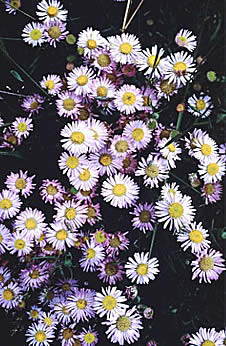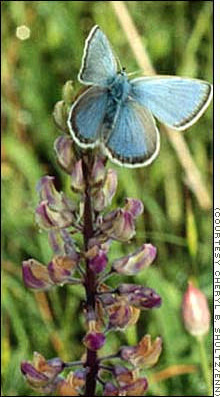What is So Special About Oregon White Oak? (Part 2)
A Fender's Blue Butterfly on Kincaid's Lupine
We learned in our last installment that there are a whole lot fewer oak trees in the Willamette Valley than there used to be. While the mighty Oregon White Oak is an iconic tree on its own, it traditionally exists within a complex ecosystem. This ecosystem in the Willamette Valley is home to a number of ecologically significant and endemic species. The endangered Willamette Daisy exists in only 18 sites in the Willamette Valley, including the Zena Forest. Also endemic to the valley Oak Savannah, are the Fender's Blue Butterfly and Kincaid's Lupine. This plant and animal duo is exceedingly rare, and federally listed as endangered. The butterfly only exists in native prairie grasslands that are typically sparsely populated with broad spreading oak trees. The butterfly has only been found in 32 different sites throughout the Willamette Valley. The largest concentration of their population is in the Baskett Slough National Wildlife Refuge which is located about 5 miles from the Zena Forest. Fender's Blue Butterfly only lays its eggs on Kincaid's Lupine, another endangered Willamette Valley prairie species. The survival of both the lupine and the butterfly are inextricably linked with the survival of the oak savannah in the valley. While neither of these species have been found at the Zena Forest yet, we have been working hard to create habitat conducive to these species. It is both an incredible gift and an incredible responsibility to be the stewards of this important landscape. With so few acres of habitat left, it is exciting to be able to play an important role in the survival of these species.
Our management goals at the Zena Forest include both habitat preservation as well as commercial forestry. While these two goals are often in conflict with each other, through careful stewardship, we are able to continue to log and thin our forest while at the same time we are able to preserve and increase habitat for these endangered species.
Stay tuned for part three of "What is So Special About Oregon White Oak?
Update: Read part three here.


